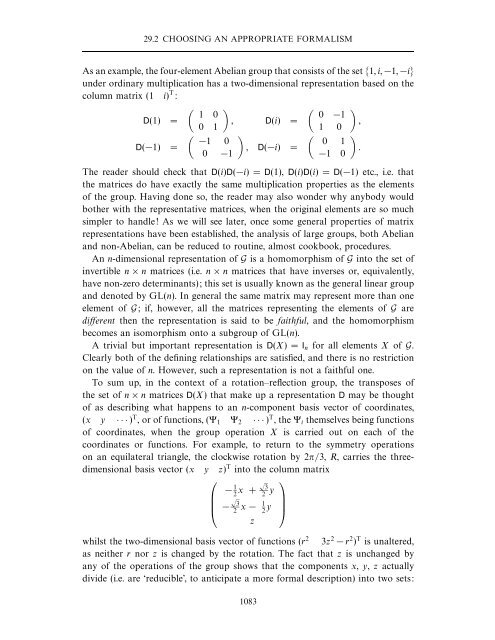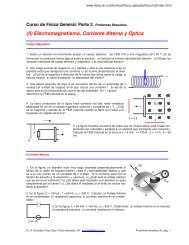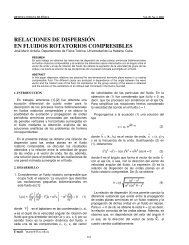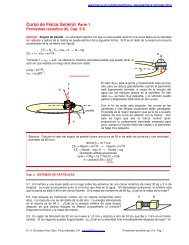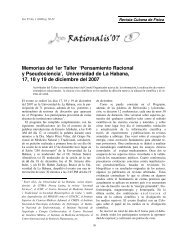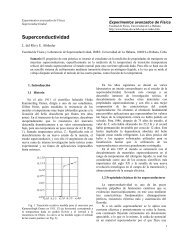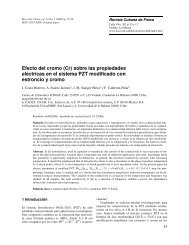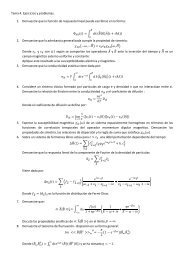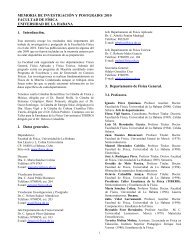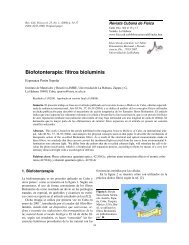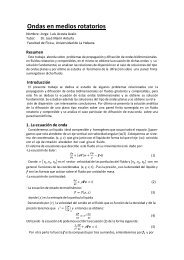Group theory
Group theory
Group theory
Create successful ePaper yourself
Turn your PDF publications into a flip-book with our unique Google optimized e-Paper software.
29.2 CHOOSING AN APPROPRIATE FORMALISMAs an example, the four-element Abelian group that consists of the set {1, i, −1, −i}under ordinary multiplication has a two-dimensional representation based on thecolumn matrix (1 i) T : 1 00 −1D(1) =, D(i) =,D(−1) =0 1 −1 00 −1, D(−i) =1 0 0 1−1 0The reader should check that D(i)D(−i) = D(1), D(i)D(i) = D(−1) etc., i.e. thatthe matrices do have exactly the same multiplication properties as the elementsof the group. Having done so, the reader may also wonder why anybody wouldbother with the representative matrices, when the original elements are so muchsimpler to handle! As we will see later, once some general properties of matrixrepresentations have been established, the analysis of large groups, both Abelianand non-Abelian, can be reduced to routine, almost cookbook, procedures.An n-dimensional representation of G is a homomorphism of G into the set ofinvertible n × n matrices (i.e. n × n matrices that have inverses or, equivalently,have non-zero determinants); this set is usually known as the general linear groupand denoted by GL(n). In general the same matrix may represent more than oneelement of G; if, however, all the matrices representing the elements of G aredifferent then the representation is said to be faithful, and the homomorphismbecomes an isomorphism onto a subgroup of GL(n).A trivial but important representation is D(X) = I n for all elements X of G.Clearly both of the defining relationships are satisfied, and there is no restrictionon the value of n. However, such a representation is not a faithful one.To sum up, in the context of a rotation–reflection group, the transposes ofthe set of n × n matrices D(X) that make up a representation D may be thoughtof as describing what happens to an n-component basis vector of coordinates,(x y · · · ) T , or of functions, (Ψ 1 Ψ 2 · · · ) T , the Ψ i themselves being functionsof coordinates, when the group operation X is carried out on each of thecoordinates or functions. For example, to return to the symmetry operationson an equilateral triangle, the clockwise rotation by 2π/3, R, carries the threedimensionalbasis vector (x y z) T into the column matrix⎛⎜⎝− 1 2 x + √ 32 y− √ 32 x − 1 2 yzwhilst the two-dimensional basis vector of functions (r 2 3z 2 − r 2 ) T is unaltered,as neither r nor z is changed by the rotation. The fact that z is unchanged byany of the operations of the group shows that the components x, y, z actuallydivide (i.e. are ‘reducible’, to anticipate a more formal description) into two sets:1083⎞⎟⎠.


